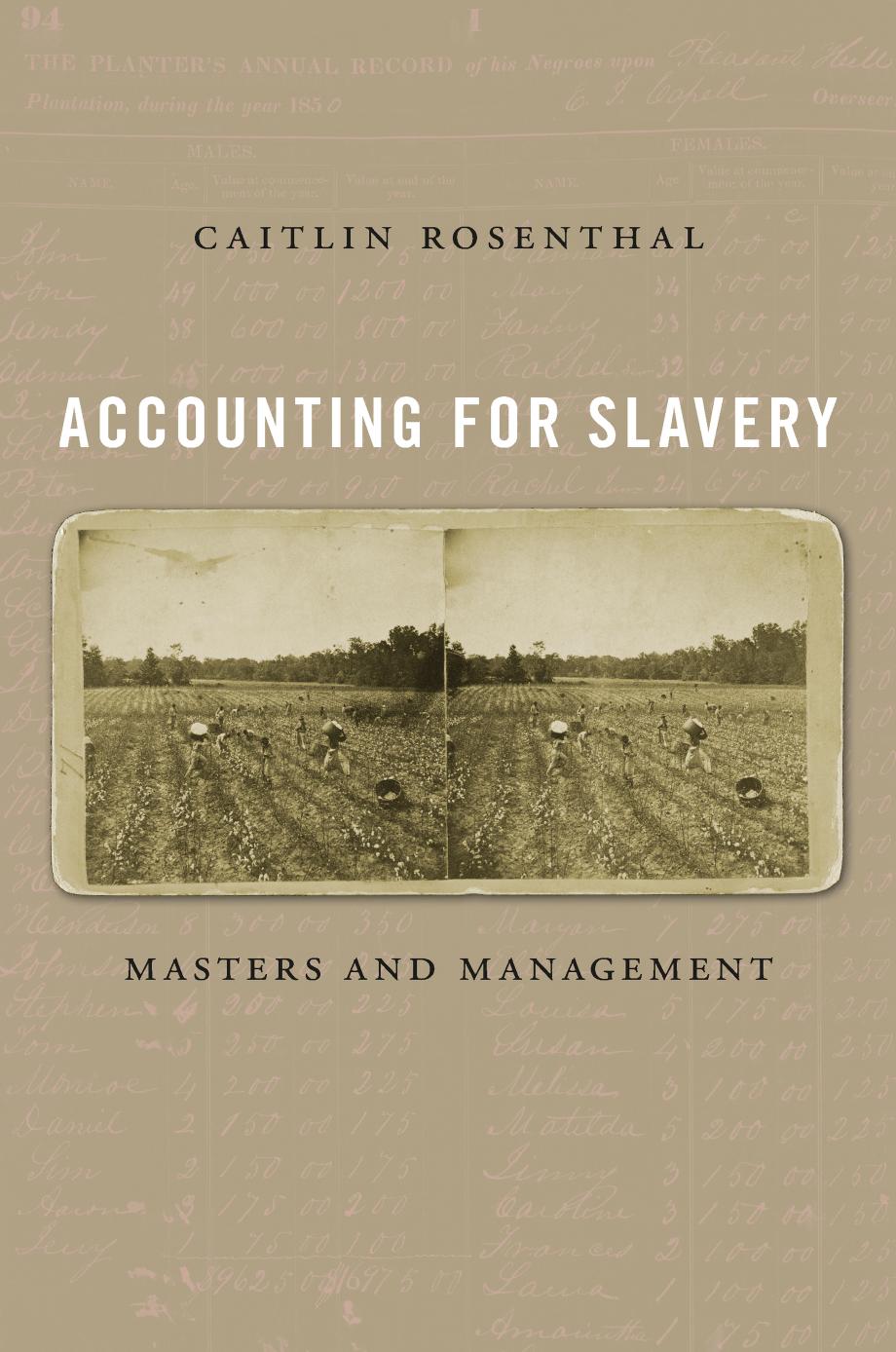Accounting for Slavery by Caitlin Rosenthal

Author:Caitlin Rosenthal [Rosenthal, Caitlin]
Language: eng
Format: epub, pdf
ISBN: 9780674972094
Publisher: Harvard University Press
Published: 2018-08-06T04:00:00+00:00
In the preparation of inventories, the use of depreciation, and the development of standardized price schemes, southern slaveholders were at the cutting edge of nineteenth-century valuation practices. When they calculated depreciation, midsized southern planters were making use of a technique found only at a few of the largest railroads and manufacturers. By including it in his instructions for planters, Thomas Affleck advanced ahead of most accounting textbooks, which did not begin to cover the topic until the 1880s. Similarly, price lists like Betts & Gregoryâs used some of the same practices that were enabling innovation at the Chicago Board of Trade. And the practice of rating enslaved people as fractions of a hand helped planters to think abstractly about productivity, linking the valuation of slaves with their labor.
Planters invested vast sums of capital in complex, long-lived human assets, and their profitability depended both on extracting labor and on maintaining or increasing their capital over time. Traders sought to turn this capital: to buy low and sell high as fast as possible. They practiced a kind of human arbitrage, and their success required them to see value and the potential for it to be transformed, whether through relocation to a new market or through careful marketing and presentation. Though the commodification of enslaved people was far from complete, law and calculation combined to make enslaved people a flexible asset from which slaveholders extracted substantial wealth both as labor and as capital.
Men, women, and children were complex and unpredictable assets. Pricing and appraisalâthe most inhumane of activitiesâwere always inextricably human. Despite this, buyers, sellers, and traders imagined pricing to be a rational exercise, and their records show how they used measurable characteristics and invisible punishments in order to constrain the opportunities for enslaved people to shape the market. Though it often seems like slaveholders pushed for commodification and enslaved people struggled against it, the reality was more complex and pernicious. Masters shifted between different genres of valuation at their convenience. When they needed to think about enslaved people as interchangeable inputs of production, they relied on standardized grading schemes and the system of fractional hands. But in the throes of individual negotiationsâincluding those with enslaved people seeking to buy themselves or loved onesâthey could demand a premium price, arguing that particular slaves were uniquely valuable.
Ultimately, maintaining and increasing the value of enslaved property was as much a matter of politics and power as of calculation and management. Politicians translated calculations of human capital to a national scale. They quoted the immense market capitalization of slavesâlikely between three and four billion dollars in 1860âas evidence of slaveryâs indispensability to the Union. Eventually they used it in their arguments for secession. When the advancing war threatened this property, enslaved people grasped their freedom. Planters lost the control that had once allowed them to dominate men, women, and children, and to analyze their labor and lives in columns of numbers. And with radically different politics and power structures came new methods of management. These new systemsâand the account books that documented themâare the subject of Chapter 5.
Download
This site does not store any files on its server. We only index and link to content provided by other sites. Please contact the content providers to delete copyright contents if any and email us, we'll remove relevant links or contents immediately.
| Biographies | Company Profiles |
| Economic History |
Pale Blue Dot by Carl Sagan(4580)
The Rules Do Not Apply by Ariel Levy(4490)
Goodbye Paradise(3415)
Ogilvy on Advertising by David Ogilvy(3290)
Delivering Happiness by Tony Hsieh(3258)
Liar's Poker by Michael Lewis(3193)
Into Thin Air by Jon Krakauer(3103)
Purple Cow by Seth Godin(3047)
Rogue Trader by Leeson Nick(2807)
The Social Psychology of Inequality by Unknown(2728)
The Airbnb Story by Leigh Gallagher(2666)
4 - Harry Potter and the Goblet of Fire by J.K. Rowling(2505)
The Mind Map Book by Tony Buzan(2396)
Bossypants by Tina Fey(2352)
All the President's Men by Carl Bernstein & Bob Woodward(2240)
Claridge's: The Cookbook by Nail Martyn & Erickson Meredith(2240)
Six Billion Shoppers by Porter Erisman(2201)
Master of the Game by Sidney Sheldon(2161)
Alibaba by Duncan Clark(1960)
